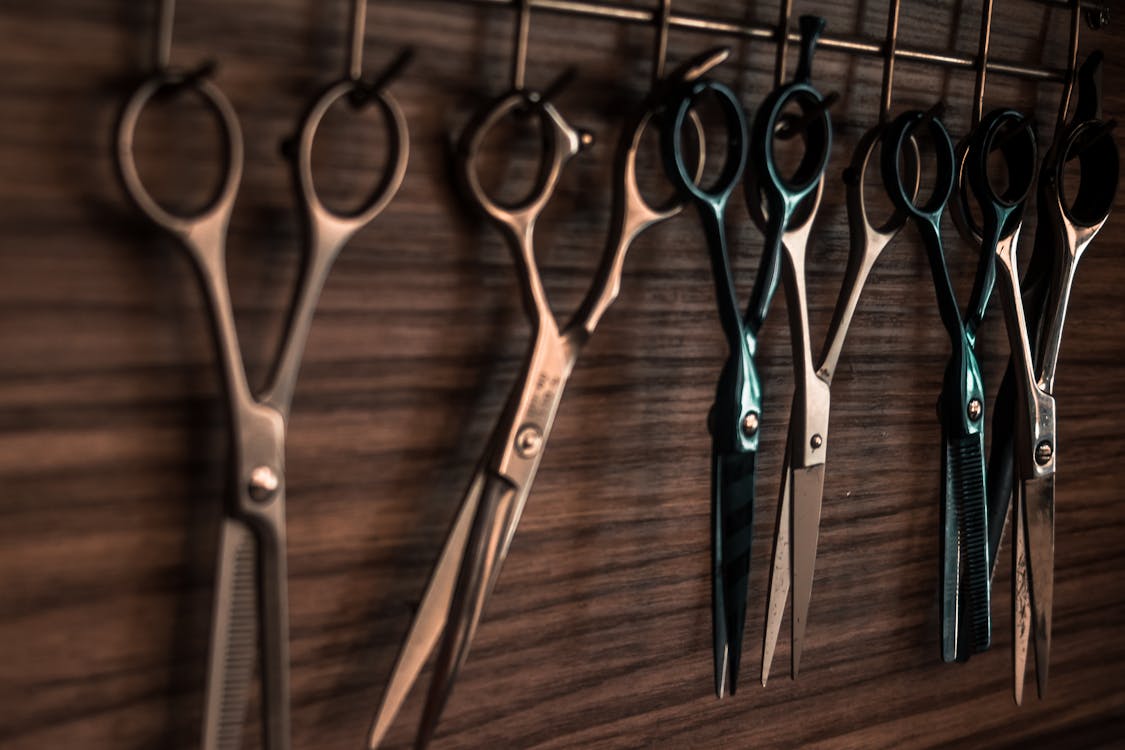Blade sharpening Specialized for Vets
Clipper blade sharpening for Vets
As a professional cutler, you know how important it is to have sharp knives. This not only guarantees that your work is efficient and accurate, but it also prevents potential injuries. This is where honing steel comes in. Honing steel is a vital tool for anyone who is a serious butcher or chef, but precisely what is this tool? And why is it so vital to your knife proficiency? This article will examine these questions and many more as we discuss the benefits of honing the steel and how to use it properly.
What is honing?
Honing steel (also known as sharpening steel) is a lengthy metal rod with a ridged edge that can be utilized to sharpen and keep the edge of knives. It is made up of two components which are the rod itself and the handle that houses an elongated grip for safe handling. The rod's body has the ridges running lengthwise along the body. These ridges are what create an edge once the knife moves over them. When honing steel is used properly, it produces an ultra-sharp edge to a knife blade that can last for longer than use whetstones or electric sharpeners all on their own (1).
What are the advantages of honing steel?
One of the primary benefits of using honing steel is that it helps prolong the life that your blades last. When you regularly run your knives over the ridges on your honing steel, you can to keep them sharper for longer periods of time , by aligning any edges that may have become jagged or dulled in time (2). This will save you time and cash in the end, as you don't have to buy new blades every time! In addition, because honing stainless steel isn't sharpening tools like whetstones or grinders, it won't harm or wear down the blades as time passes (3).
Another advantage of honing steel is its safety. When used properly it prevents accidents caused by dull blades by creating an edge that is razor-sharp each time you use honing steel (4). When cutting through materials that are tough sharp blades may cause nicks, slips or even slips. Regularly honing steels will keep blades sharp and minimize the risk of injury by a significant amount.
How can I make use of my honing tool correctly?
The correct way to hone steels requires patience and precision; here are some simple steps to get started:
- 1) Start with a knife that is parallel to the rod, not against it. It should be at around a 20-degree angle (5).
- 2) 2. Move the blade slowly along one side of the rod in steady intervals until you get to the rod's point; repeat this movement on the other side, applying gentle tension throughout every stroke (6).
- 3.) Make sure to maintain an equal angle through every stroke. A slight angle could lead to an ineffective edge, while too much can result in damage to your blade (7).
- 4.) After both sides have been completed evenly, gradually work up towards its base until all areas have been treated before repeating the strokes from tip-to-base numerous times, depending on how sharp you want the edge of your blade to be.
- 5) Lastly, complete by wiping off any metal shavings with a damp cloth prior to storing them away to use in the future!
Conclusion
In the end that, honing stainless steels are indispensable equipment for every serious fan looking for a precise edge on their knives, without creating unnecessary wear and tear from sharpeners that are abrasive, such as whetstones or electric sharpeners. They not only make you money because they prolong the lifespan of blades as well, but they can also help create a an improved and safer cutting experience each time you use them! Remember to be careful when you use them, and make sure you are patient and careful with each stroke--good luck!
Sharpening Seated Knives
Serrated knives are useful for many different tasks such as slicing vegetables or cutting through tough meats. If the serrations of your knife become dull, it's time to sharpen the blades. To do this you'll require the diamond sharpening tool. A diamond sharpening steel is an invaluable device for any professional or home cook. It allows you to swiftly and accurately sharpen not just straight-edge but also serrated knives and cutting boards.
The most effective method to sharpen your serrated knife is with diamond cutting edge stones. This type of stone is constructed from diamonds and is extremely hard. The harder the stoneis, the sharper its blade. Diamonds cut through any material effortlessly. They are used in the production of jewelry , and are very expensive.
However, there are many options to sharpen your serated knife, without spending many thousands. You can make use of a standard filet knife or bench grinder and even sandpaper.
There are various kinds of stones available at your local hardware store. Some prefer emery paper which is less expensive than diamond stones. But, if you wish to see the most impressive results, then go for a diamond stone.
What is a diamond-sharpening steel?
A diamond sharpening rod (also called a honing rod) is an indispensable tool for keeping the kitchen knives sharp. It has a diamond abrasive surface, which makes it perfect for sharpening straight-edged knives and serrated edges. The diamond's fine grit surface aids in eliminating burrs and nicks from the blade edge and also aligns the fibers of metal so that they overlap perfectly when reattaching the blade's edge. This helps ensure that the knife will keep its new edge longer than when using other types of sharpening rods or stones.
Using diamond Sharpening Steel , you can Sharpen serrated knives
Sharpening serrated knives requires specialized techniques that are different from those used for straight-edged blades. Before you use your diamond sharpening tool, make sure that you study the manual of the product carefully since the instructions may differ according to the kind of rod you have purchased.
- Step 1: First, use an absorbent cloth to wipe off any food particles or debris that may be on the blade. Next, you'll need your diamond sharpening iron to make the blade sharper.
Step 2: Take the handle of your diamond sharpening iron firmly in one hand and hold the blade of your serrated knife in its long face at an angle ranging between 20deg to 30deg from its lengthwise side (as illustrated in Figure 1). - Step 3: Slowly slide your knife down its long edge with alternating forward and reverse movements until all of its serrations are brushed against it several times (as illustrated in Figure 2). Be careful not to push too hard or too fast. This could cause damage to your knife's edge and surface of your honing rod!
- Step 4: After all of your knife's serrations have been brushed across it numerous times, repeat Step 3 with each individual serration until you have achieved the desired results (as as shown in figure 3).
- Step 5: To close off, give each individual serration a final smoothing stroke using moderate pressure. Clean off any remaining residue with a soft cloth prior to putting them in a safe place!
Conclusion
Sharpening serrated knives is a bit of a hassle if you don't know the right way to go about it. However using the right method and attention you can maintain these tools with just a few strokes on a good honing rod, such as a diamond sharpening steel! Use these steps every time you're looking to smooth or reshape your knife's edges--you'll be happy you took the time!
More information:
Zdravje in Dom Kombuča shears sharpening knife cutting tools

